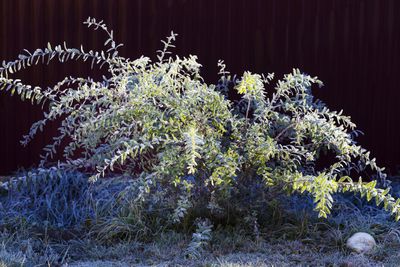Cutting Back Dappled Willows
The dappled willow is native to Japan and Korea where it frequently grows near water, like along streams and in marshes. Its shoots were used in yesteryear for basket making. A Dutch breeder brought Salix integra ‘Hakuro-nishiki’ to this country in 1979. Today, it is considered an ornamental, which means that dappled willow pruning is a part of many gardener’s to-do lists. All willows grow rapidly, and dappled willows are no exception. Keep this in mind when you are choosing trees for your backyard. Dappled willows are attractive, tolerant, and quick-growing trees. You’ll find that these willows grow branches and shoots remarkably fast. They also produce lots of suckers around their bases. You’ll need to trim a dappled willow at least once a season to stay on top of its growth. If you are wondering how to prune dappled willow, you’ll be happy to hear that you can virtually do no wrong. These are very forgiving trees and will thrive no matter how you trim them. In fact, cutting back dappled willow almost always makes them more attractive. That’s because all new shoots grow in with lovely pink-tinged foliage.
How to Prune Dappled Willow
There are a few steps you will want to take every time you prune, while the rest will be dictated by your plan for the shrub/tree. Start pruning a dappled willow by removing dead, broken, or diseased branches. This is essential for the health and vitality of the plant. If the plant growth is dense, you should then work on cutting back dappled willows on the inside to open them and allow for better air circulation. Also, remove suckers from the base of the tree. After that, you enter the stage of discretional trimming. You must prune your dappled willow to the shape you prefer. You can prune it into a short shrub, allow it to grow to its full height, or select something in between. Let your overall landscape plan be your guide. As you shape and trim a dappled willow, maintain its graceful natural shape, upright and slightly rounded. Use loppers and/or pruning shears to thin overly long branches and head back terminal growth.
